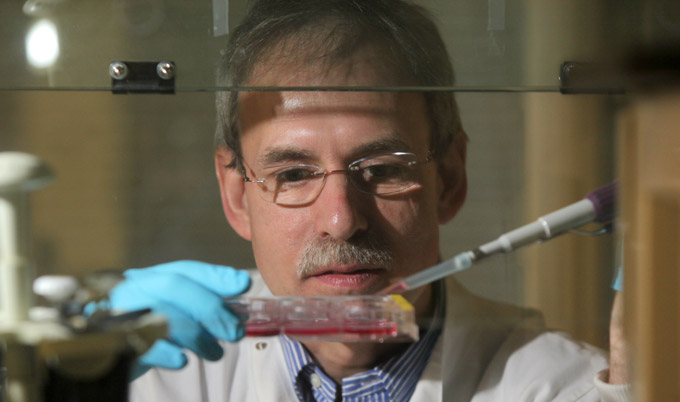For the first time, scientists have identified the activity of a metabolic enzyme found in the batteries of human skin cells as being key to the declines of aging.
A Newcastle University study, published online in the Journal of Investigative Dermatology, has found that the activity of mitochondrial complex II significantly decreases in older skin.
CHECK OUT: 5 Common Kitchen Products Are the Recipe for Great Skin and Hair
This discovery brings experts a step closer to developing powerful anti-aging treatments and cosmetic products which may be tailored to counteract the decline in the enzyme’s activity levels.
Paving the way for developments in age-related diseases
Mark Birch-Machin, Professor of Molecular Dermatology at Newcastle University, led the pioneering study with Dr Amy Bowman from his research group.
Professor Birch-Machin said: “As our bodies age we see that the batteries in our cells run down, known as decreased bio-energy, and harmful free radicals increase.
“This process is easily seen in our skin as increased fine lines, wrinkles and sagging appears. You know the story, or at least your mirror does first thing in the morning!
RELATED: There’s a Secret to Japanese Youthful Skin and Longevity
“Our study shows, for the first time, in human skin that with increasing age there is a specific decrease in the activity of a key metabolic enzyme found in the batteries of the skin cells.
“This enzyme is the hinge between the two important ways of making energy in our cells and a decrease in its activity contributes to decreased bio-energy in aging skin. Our research means that we now have a specific biomarker, or a target, for developing and screening anti-ageing treatments and cosmetic creams that may counter this decline in bio-energy.
WANT MORE BREAKTHROUGH STORIES? GET OUR GOOD NEWS APP—>Download FREE for Android and iOS
“There is now a possibility of finding anti-aging treatments which can be tailored to differently aged and differently pigmented skin, and with the additional possibility to address the aging process elsewhere in our bodies.”
Enzyme activity declines with age
Complex II activity was measured in 27 donors, from aged six to 72 years. Samples were taken from a sun-protected area of skin to determine if there was a difference in activity with increasing age.
It was found that complex II activity significantly declined with age, per unit of mitochondria, in the cells derived from the lower rather than the upper levels, an observation not previously reported for human skin.
WATCH: Make-up Tutorial Helps Older Skin Shed Ten Years (Video)
The scientists found that the reason for this is the amount of enzyme protein was decreased and furthermore this decrease was only observed in those cells that had stopped proliferating.
Further studies will now be required to fully understand the functional consequences in skin and other tissues, and to establish methods to assess anti-aging strategies in human skin.
Dr Bowman, Research Associate at Newcastle University’s Institute of Cellular Medicine, said: “Newcastle University is pioneering research into aging as it has long been thought that mitochondria play an important role in the aging process, however the exact role has remained unclear.
RELATED: New Study Shows Exercise Gives You Younger Skin
“Our work brings us one step closer to understanding how these vital cell structures may be contributing to human aging, with the hope of eventually specifically targeting areas of the mitochondria in an attempt to counteract the signs of aging.”
A recent study carried out in mice showed that complex II activity is lower in the skin of naturally aged older mice compared to younger mice.
The mitochondrial complex II published research was funded by the North Eastern Skin Research Fund, the NIHR Biomedical Research Centre at Newcastle University and Newcastle Upon Tyne Hospitals NHS Foundation Trust and Newcastle University’s Faculty of Medical Sciences.
(Image and Article Source: Newcastle University)




















